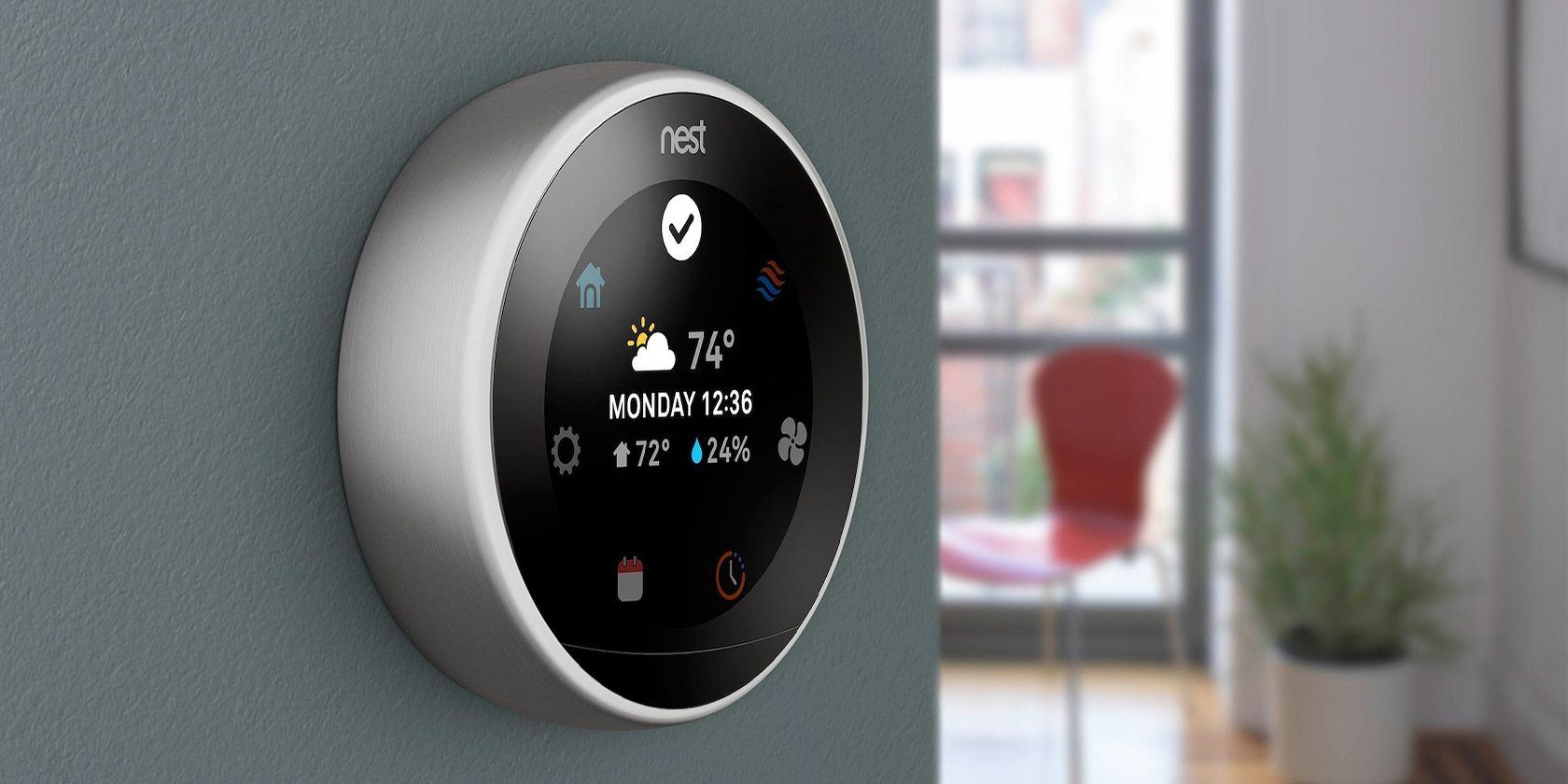There are plenty of myths and lies about smart homes floating around, but one of the worst misconceptions is the idea that smart homes are nothing more than gimmicks. That couldn't be farther from the truth.
We've explored the practical benefits of a smart home on many occasions, but did you know that there are health benefits as well? That's right. One or two smart purchases could drastically improve your quality of life at home.
Skeptical? That's fine. I just ask that you keep an open mind as we explore said health benefits in this article. You may be pleasantly surprised by how reasonable and non-gimmicky they are!
1. Better Quality Sleep at Night
As I write this, I'm suffering through an intense heat wave that's been going on for close to two weeks now. For most people, the worst part of a heat wave is the sudden spike in cooling costs to reach a comfortable home temperature.
For frugal folks like me, the worst part of a heat wave is the onset of restless nights and the inability to get a good night's sleep.
But as we all know, insomnia isn't an issue that only occurs during heat waves. In 2008, NPR claimed that "roughly 60 million Americans are affected by [insomnia] each year" -- or just under 20% of the population. That number is likely higher now.
As it turns out, recent research shows that sleeplessness could be caused by sleeping at the wrong temperature. Most people think that colder is better, but too hot and too cold can harm sleep quality.
When you go to sleep, your set point for body temperature -- the temperature your brain is trying to achieve -- goes down. Think of it as the internal thermostat. If it’s too cold ... or too hot, the body struggles to achieve this set point.
If the room becomes uncomfortably hot or cold, you are more likely to wake up ... [and] the comfort level of your bedroom temperature also especially affects the quality of REM (rapid eye movement) sleep, the stage in which you dream.
So what's the ideal range for sleep? Between 68-72 F.
Fortunately, there are smart home devices that can automatically set your home's temperature to a comfortable level while you sleep, all without wasting energy unnecessarily. We'll explore some of these devices below.
2. Prevent Growth of Mold and Bacteria
According to the University of Central Florida, there are four critical requirements for the growth and spread of mold:
- Presence of mold spores. Mold spores are not only too small to see with the naked eye, they're literally everywhere in the air and there's no practical way to escape them, so don't worry about this.
- Food for the mold. Most molds can live off of anything that's organic, but you'll mostly find mold in areas with wood, paper, and organic fibers. Keeping clean can stave off mold.
- Warm temperatures. Mold tends to grow at the same temperatures that are comfortable for humans, so unless you're prepared to be uncomfortable, temperature control isn't a good way to prevent mold.
- High humidity. Most molds need a lot of water to thrive -- a relative humidity of 70% or higher -- which is why mold is common in bathrooms and in areas hit with water leaks.
Bacteria also need water to thrive, and can start growing with exponential speed at a relative humidity of 50% or higher. Mold can be an irritant (e.g. eyes) and can cause respiratory issues while bacteria can cause serious illnesses (e.g. Legionnaires' disease).
By controlling the humidity in your house, you can limit the amount of mold and bacteria and thus improve your health.
3. Alleviate Physical Discomfort
Temperatures and humidities outside of the optimal range for humans can cause a lot of direct discomfort as well.
I mean, most of us know what it feels like to suffer through a prolonged heat wave or to be surprised by a cold snap that we weren't prepared for, right? The unlucky among us have to deal with both swings year after year.
But did you know that humidity also plays a huge role in our day-to-day comfort at home? Indeed, humidity -- the amount of moisture in the air -- can be more impactful that you might think.
When the air is too dry, you can experience discomfort in the form of your eyes drying out, inflammation in your sinuses and your airways due to dry mucous linings, and your skin becoming chapped or irritated due to lack of moisture ("winter itch").
Low humidity is a big problem during the winter due to rampant heating, but it can also be a chronic circumstance if you live in a dry area. So what's the ideal relative humidity for your house? Between 30--50%. Any higher will feel muggy and encourage the growth of mold and bacteria.
4. Increase Work Productivity
The last benefit of carefully monitoring and controlling the temperature and humidity in your home is all mental. An optimal environment can have a positive influence on your mental state, leading to more positive thoughts and actions.
On the one hand, this seems pretty obvious, doesn't it? It's hard to do good work when you're hands are frozen and shaking, just as it's tough to concentrate when you're hot, sticky, and melting in the heat.
But if it's so obvious, let me ask you: what is the ideal temperature for optimal work productivity?
If you answered with "room temperature" -- or approximately 68--70 F -- then you'd actually be wrong! Room temperature is the best temperature for sleep quality, but it's not quite optimal when it comes to getting work done and minimizing the amount of mistakes you make.
And if you answered below room temperature, you'd also be wrong. In fact, according to a 2004 study by Cornell University, warmer is better:
When the office temperature in a month-long study increased from 68 to 77 degrees Fahrenheit, typing errors fell by 44 percent and typing output jumped 150 percent.
At 77 degrees Fahrenheit, the workers were keyboarding 100 percent of the time with a 10 percent error rate, but at 68 degrees, their keying rate went down to 54 percent of the time with a 25 percent error rate ... Temperature is certainly a key variable that can impact performance.
So if you want to be more productive -- whether you're working from home or stuck in a cubicle -- consider raising the temperature to several degrees above room temperature.
How to Monitor Home Temp and Humidity
Now the main question is, how can smart home products help you take advantage of these temperature- and humidity-related health benefits? Here are a few devices to know about. Feel free to cherry-pick the ones you find most interesting.
Nest Learning Thermostat: The Nest is one of the most practical smart home devices you could ever buy. Not only can it significantly reduce your energy spendings, but it can increase the value of your home.
You can also do a bunch of other neat things with it if you like tinkering. And the best part? It's extremely easy to install no matter who you are.
Ecobee3 Smarter Thermostat: If the Nest doesn't appeal to you for some reason, then check out the Ecobee3. There are several other alternatives to Nest out there, but none are quite as excellent as this one.
In fact, in our comparison of Ecobee3 vs. Nest, we actually thought the Ecobee3 was on par, if not slightly better. Very good at keeping your home temperature in check while minimizing your energy bill.
Elertus Remote Home Sensor: This sensor isn't as useful as having one of the full-blown smart thermostats above, but it can still come in handy at times. Mount it anywhere and you can check in on it remotely with your smartphone.
The Elertus can monitor temperature, humidity, door status, light status, and movement. You can also create custom alerts (push, text, email) based on these, allowing you to effortlessly maintain optimal conditions at home.
SensorPush Thermometer & Hygrometer: This tiny sensor is wonderful for any home or apartment. Stick it wherever you want to know about humidity/moisture levels and you can check in on it from anywhere using your smartphone.
Like with the Elertus, you can set it to push alerts to you when it detects anything out of the ordinary. Great for catching mold-prone conditions ahead of time, making it one of the best home investments you could make.
Holmes Smart Home Humidifier: If you live in a low-humidity climate, a humidifier is a must-have purchase -- and if you're going to get one anyway, why not make it a smart humidifier?
This 4-gallon one from Holmes can humidify homes up to 2,500 sq. ft. in size, or you can opt for the single large-room alternative. Using the Holmes app, you can program and control it using just your smartphone.
In addition to all of these devices, you should also think about ways to automate home climate based on the weather as well as improving your air quality at home, which comes with its own set of other health benefits.
A Smart Home, A Healthy Home
A lot of people fret about the potential cost of a smart home, but remember that you can pick-and-choose which devices to use. Want to spend under $100? Go for it! You'd be surprised by how affordable a smart home can be.
Just remember to stick to reputable smart home brands, at least as far as circumstances allow.
What do you set the temperature and humidity in your home to? And what do you use to set them? Do you think these devices are worth it? Share with us below!
Image Credits: Desert via Shutterstock, Laptop Sleep via Shutterstock




